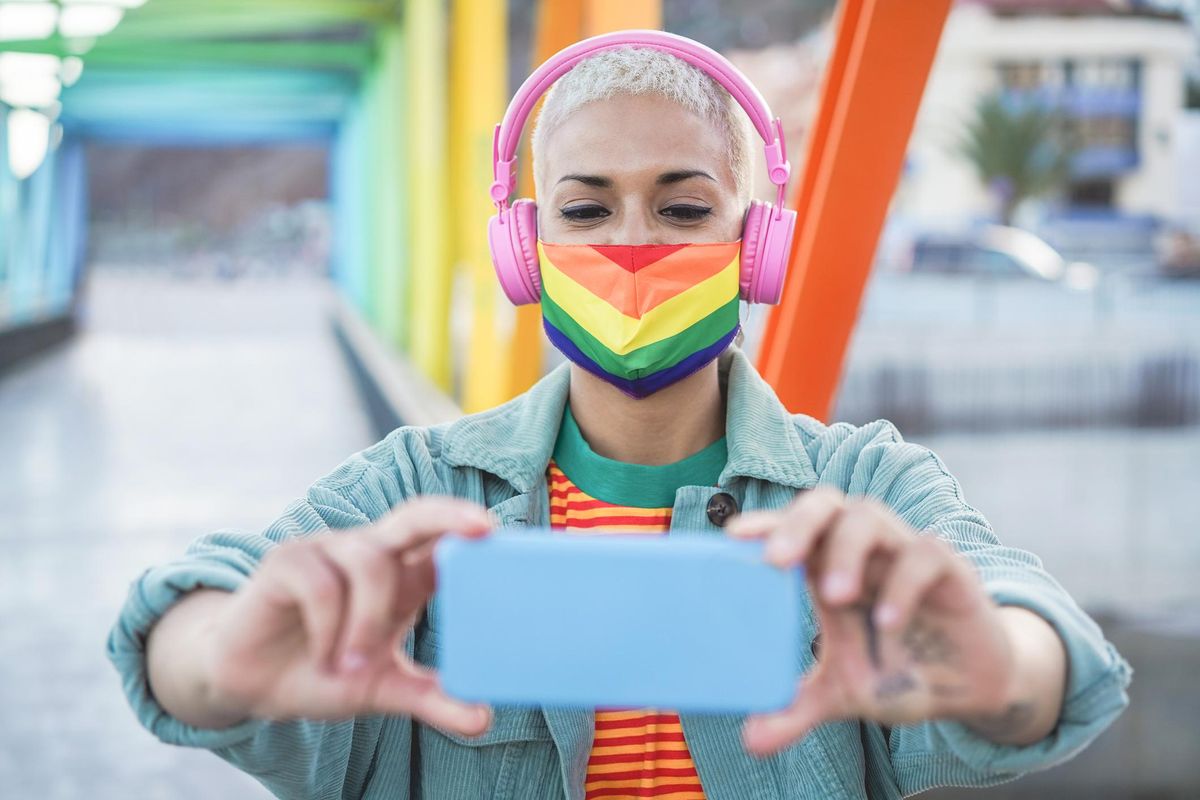
By Linda Charmaraman, Wellesley College
Teens today have grown up on the internet, and social media has served as a space where LGBTQ youth in particular can develop their identities.
Scholarship about the online experiences of LGBTQ youth has traditionally focused on cyberbullying. But understanding both the risks and the benefits of online support is key to helping LGBTQ youth thrive, both on- and offline.
I am a senior research scientist studying the benefits and challenges of teen social technology and digital media use. My colleagues, Rachel Hodes and Amanda Richer, and I recently conducted a study on the social media experiences of LGBTQ youth, and we found that online networks can provide critical resources for them to explore their identities and engage with others in the community.
Beyond cyberbullying
The increased risk of cyberbullying that LGBTQ youth face is well-documented. LGBTQ youth are almost three times more likely to be harassed online than their straight, cisgender peers. This can result in increased rates of depression and feelings of suicide: 56% of sexual minorities experience depression, and 35% experience suicidal thoughts as a direct result of cyberbullying.
However, the digital landscape may be shifting.
Our 2019 survey of 1,033 children ages 10 to 16 found no difference between the amount of cyberbullying reported by straight versus sexual minority youth residing in a relatively progressive part of the U.S. known for legalizing gay marriage. Some social media platforms like Tumblr are considered a safer haven for sexual minorities than others, especially during the COVID-19 lockdown. This is despite past censorship of LGBTQ content on certain platforms due to biases in the algorithm.
LGBTQ youth tend to have smaller online social networks than their straight peers. We found that LGBTQ youth were significantly less likely than their straight peers to engage with their online friends. Conversely, LGBTQ youth are more likely to have friends they know only online, and to perceive these online friends as significantly more socially supportive than their in-person friends.
The LGBTQ youth we surveyed in our study were more likely to join an online group in order to reduce social isolation or feelings of loneliness, suggesting that they were able to reach out to and engage with social media networks outside of their in-person peer circles in supportive and fortifying ways.
Despite living in an area with higher levels of acceptance toward sexual minorities, our study participants felt a need to keep parts of their identities separate and hidden online. They were less likely than non-LGBTQ kids to be friends with family members online and more likely to join social media sites their parents would disapprove of. And about 39% said they had no one to talk to about their sexual orientation at all.
Not just surviving, but thriving online
Despite the risk of online harassment and isolation, social media can give LGBTQ youth space to explore their sexual identities and promote mental well-being.
In 2007, Australian researchers conducted one of the earliest studies on how internet communities serve as safe spaces for LGBTQ youth who face hostile environments at home. Their surveys of 958 youth ages 14 to 21 found that the anonymity and lack of geographic boundaries in digital spaces provide an ideal practice ground for coming out, engaging with a communal gay culture, experimenting with nonheterosexual intimacy and socializing with other LGBTQ youth.
The internet also provides critical resources about LGBTQ topics. LGBTQ youth may use online resources to educate themselves about sexual orientation and gender identity terminology, learn about gender transition and find LGBTQ spaces in their local community. The internet can also be a useful tool to identify LGBTQ-friendly physicians, therapists and other care providers.
Finally, online platforms can serve as springboards for LGBTQ activism. A 2013 report by the Gay, Lesbian & Straight Education Network surveying 1,960 LGBTQ youth ages 13 to 18 found that 77% had taken part in an online community supporting a social cause. While 68% of LGBTQ youth also volunteered in-person, 22% said they only felt comfortable getting involved online or via text. This signals that online spaces may be critical resources to foster civic engagement.
While social media is not without its dangers, it can often serve as a tool for LGBTQ youth to build stronger connections to both their local and virtual communities, and communicate about social issues important to them.
[Insight, in your inbox each day.You can get it with The Conversation's email newsletter.]
Linda Charmaraman, Director of Youth, Media & Wellbeing Research Lab, Wellesley College
This article is republished from The Conversation under a Creative Commons license. Read the original article.







